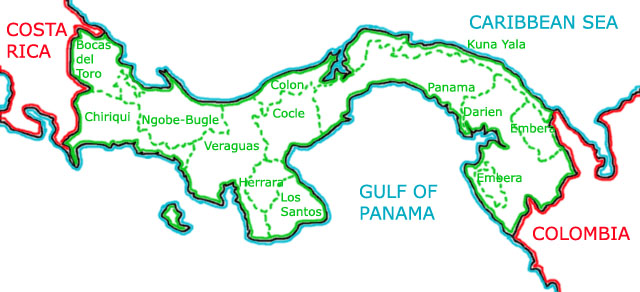Antheraea
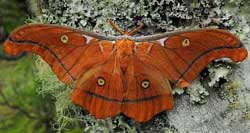
Antheraea godmani male
| 
Antheraea godmani female
| Fresh specimens are generally orangey-brown with both sexes having a strong white "T-shape", just below the fw costa between the am line and
cell mark. Males have an elongated forewing apex. Each wing has a single, prominent, yellow-ringed, subcircular cell mark. High elevation species from Mexico to
northern Colombia.
|
Copaxa: Decrescens Group: Decrescens Subgroup
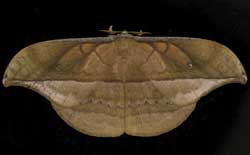
Copaxa decrescens male
| 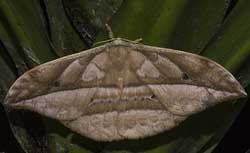
Copaxa decrescens female
| Based on DNA barcoding analysis, this species now seems limited to eastern Brazil, eastern Argentina and eastern Paraguay.
It would not be expected in Panama!
|
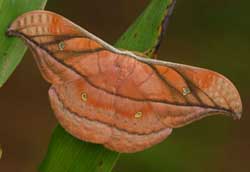
Copaxa troetschi male
| 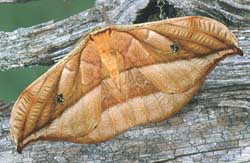
Copaxa troetschi female
| Panama: Chiriqui; Cocle.
It is very difficult to distinguish this species from decrescens,
which flies in eastern Brazil, eastern Argentina and eastern Paraguay, but troetschi males have a more pronounced forewing apex.
Some males have extensive orange scaling.
male wingspan: 93-103mm; 200-1300 meters |
Copaxa: Decrescens Group: Rufinans Subgroup
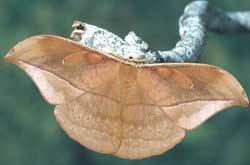
Copaxa moinieri male
| 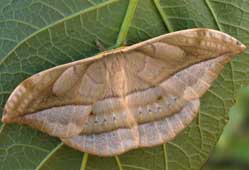
Copaxa moinieri female
| Fw length: males: 60-62mm; females: larger)
Panama: Chiriqui; at elevations from 540m -2000m.
The apex is sharp; discal spots are small. Ground colour seems less varied (more uniform) than in similar species.
|
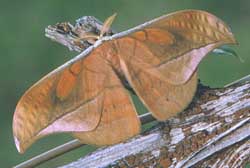
Copaxa rufinans WO??, male
| 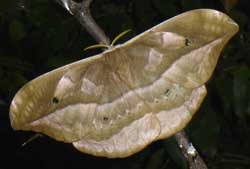
Copaxa rufinans female
| I think Copaxa rufinans may be limited to Mexico and Belize
and am not sure of where it transistions into subspecies Copaxa rufinans rufstralica, but specimens from Panama
are most likely subspecies Copaxa rufinans rufstralica. |
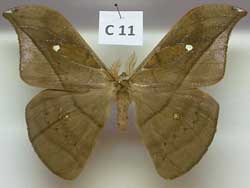
Copaxa rufinans rufstralica male
| 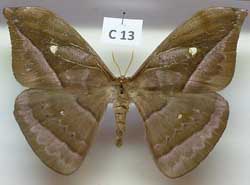
Copaxa rufinans rufstralica female
| Copaxa rufinans rufstralica probably replaces C. rufinans rufinans in Panama.
The female in the rufinans row is from Guatemala, and it may be Copaxa rufinans rufstralica.
|
Copaxa: Multifenestrata Group: Multiple hyaline spots on all wings
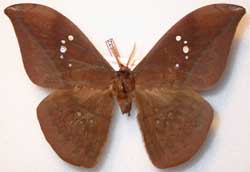
Copaxa multifenestrata male
| 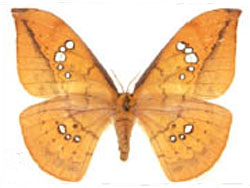
Copaxa multifenestrata ?? female
| 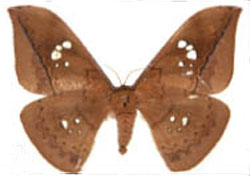
Copaxa multifenestrata female
|
From this group, Copaxa multifenestrata and Copaxa escalantei may be limited to Mexico and
possibly Belize, being replaced by very similar species throughout the rest of Central America.
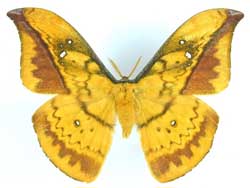
Copaxa rufotincta male
| 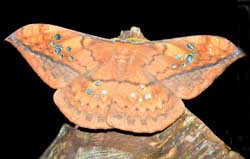
Copaxa rufotincta female
| This species possibly flies from Panama to northwestern Ecuador.
|
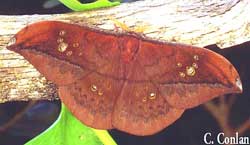
Copaxa conlani male
| 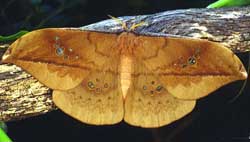
Copaxa conlani female
| I believe this moth flies from Costa Rica into western Panama: Chiriqui.
|
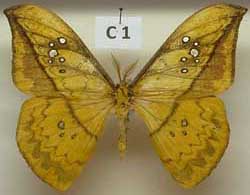 Copaxa australoescalantei male
Copaxa australoescalantei male
| 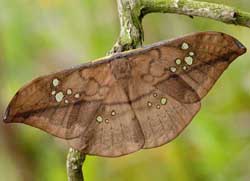
Copaxa australoescalantei female
females are always dull brown
| C. australoescalantei males can be yellow or brown or a mix of both. This species
probably replaces escalantei in all of Central America south of Mexico. There are multiple hyaline spots (size and number can vary) on all wings.
Males and females tend to be slightly smaller than their more northerly counterpart, C. escalantei.
|
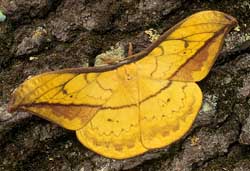
Copaxa escalantei ??, male
| 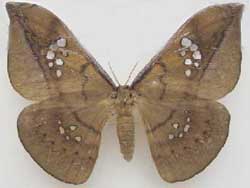
Copaxa escalantei female
| This species is probably limited to Mexico and possibly Belize, being replaced further south in Central America by
Copaxa austeraloescalantei. There are multiple hyaline spots on all wings, with spots on the females much more prominent.
|
Expandens Group: Single, small, circular ocellus without an enclosing yellow ring
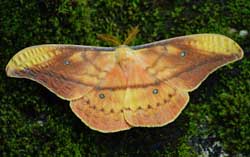
Copaxa syntheratoides WO??, male
| 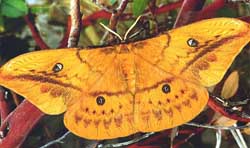
Copaxa syntheratoides female
| Males: quite variable: yellow to orangey red. Single hyaline cell mark on each wing, with fw mark slightly ovate;
hw mark more circular. These markings do not have yellow enclosing ring found in simson.
Panama: Chiriqui; at elevations of sea level to 3100m. Fw am line not offset by dark, lower vein enclosing cell.
|
Canella Group: Single, large, subcircular, ringed ocellus on each wing.
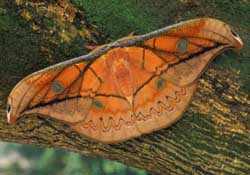
Copaxa simson male
| 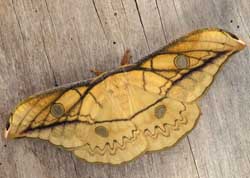
Copaxa simson female
| Both genders have a produced, pointed forewing apex, as well as a single, relatively large, subcircular, ringed ocellus on each wing.
Probably flies throughout Panama in tropical rain forests and humid savannas at elevations from 250 - 1600m.
Female wingspan of 155mm indicates a large species. Am line distinctly offset above and below lower, dark vein enclosing cell.
|
|
